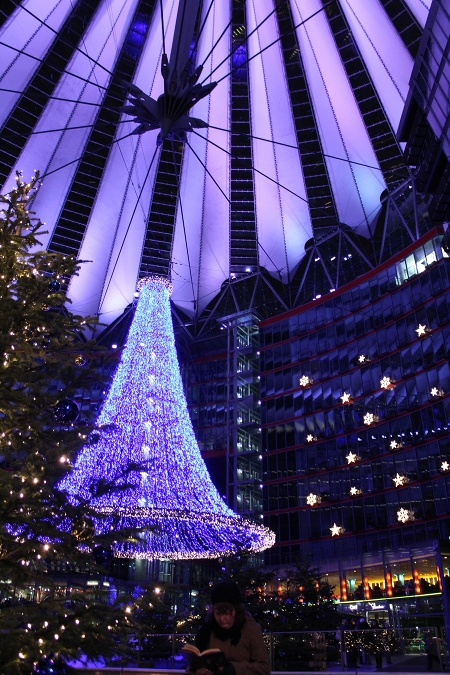randform and lateron offline
January 19th, 2012As some randform readers may have noticed the randform blog webpage, as well as Tims lateron.de were put offline yesterday Jan. 18 on the occasion of the protests against SOPA and PIPA and ACTA.
randformblog on math, physics, art, and design |
As some randform readers may have noticed the randform blog webpage, as well as Tims lateron.de were put offline yesterday Jan. 18 on the occasion of the protests against SOPA and PIPA and ACTA.
Nuclear reactors of smaller sizes like even as small as that they can be buried in the garden and the problem of the traceability of nuclear waste were already mentioned in this randform post with the example of the company Hyperion. So here a little update on the development of some of these reactors:
world nuclear info on small reactors (as of 09 Jan. 12) reports about Hyperions activities in the US:
In March 2010, Hyperion notified the US Nuclear Regulatory Commission that it planned to submit a design certification application in 2012. The company says it has many expressions of interest for ordering units. In September 2010, the company signed an agreement with Savannah River Nuclear Solutions to possibly build a demonstration unit at the Department of Energy site there. (Over 1953-1991, this was where a number of production reactors for weapons plutonium and tritium were built and run.) Hyperion has said it plans to build a prototype by 2015, possibly with uranium oxide fuel if the nitride is not then available.
But Hyperion is not the only small reactor company which is active in the US, apart from the TWR one can read the following in the press release of Babcock & Wilcox Sep. 29 2011:
The Babcock & Wilcox Company (B&W) (NYSE:BWC) and Generation mPower LLC (Generation mPower) will dedicate the unique B&W mPower™ Integrated System Test (IST) facility in Bedford County, Va., at a ceremony today.
…
The IST facility supports further development of the B&W mPower reactor technology that represents a new generation of smaller, scalable nuclear power plants. This world-class testing facility was made possible in part by generous support from the Virginia Tobacco Indemnification and Community Revitalization Commission (TICRC), which provided more than $7 million in grants to support construction of the facility and the purchase of process equipment.
Apart from the testing facility it seems the Tennessee Vallee Authority may be interested in a concrete project.
But the fastet new projects*** are probably HTR-10 versions. According to world nuclear the HTR-10 is a pebble bed reactor – a technology which was more or less abandoned here in Germany, last but not least to the accident at the research facility in Jülich, but seems to have found supporters in China.
Construction of a larger version of the HTR-10, China’s HTR-PM, was approved in principle in November 2005, with construction start in mid 2011.
And since Tsinghua university just opened a new nuclear technology lab this will not be the end of the story.
***There are of course rather old prototypes of small nuclear reactors, like there is according to world nuclear:
Already operating in a remote corner of Siberia are four small units at the Bilibino co-generation plant. These four 62 MWt (thermal) units are an unusual graphite-moderated boiling water design with water/steam channels through the moderator. They produce steam for district heating and 11 MWe (net) electricity each. They have performed well since 1976, much more cheaply than fossil fuel alternatives in the Arctic region.
And there are of course other reators and other small reactors like in submarines some of them performed so well that Russia reports 25,000 undersea radioactive waste sites.
 “verticalized overhead power line with book lover using excessive light”, fotography of the Sony Center court yard on Potsdamer Platz by Loretta (see also the randform post chains)
“verticalized overhead power line with book lover using excessive light”, fotography of the Sony Center court yard on Potsdamer Platz by Loretta (see also the randform post chains)
I was recently looking a bit into the issue of smart grids and ran over an interesting european strategy analysis.
In 2005 the european smartgrid platform www.smartgrids.eu was set up. On their document page the currently newest document linked to is from 2010, it is a Strategic Deployment Document for Europe’s electricity networks of the future (2010) on page 53 one finds:
Engineering in the energy sector, electricity grids in particular, is seen by many as old- fashioned and “difficult” as it requires a high level of competence in mathematics, physics and other sciences. This discourages the potential new students from studying and pursuing a career in power engineering.
… and
All stakeholders in the electricity sector have a responsibility to improve the image of the sector, e.g. by engaging with educational institutions and explaining in an understandable way the real benefits of being involved with and able to deliver solutions to the energy, climate and environmental challenges of today.
This sounds very much as if the major problem of getting new working force for the electricity high-tech sector is mainly a question of hipness. In part it may be true that science and math is regarded as highly “unhip” in certain circles (and the reasons for this are manifold), however the comment in the document seems to miss somewhat a crucial point. Or maybe lets say it sounds a bit strange in the view that even fields medallists in e.g. Great Britain or France try to politely point out that there is structurally something at odds with the whole european science and math research and education.
Happy holidays to all randform readers!
supplement 1.1.2012: a happy new year to all randform readers!
Just to inform you about recent randform activities – my macbook is still at the repairshop.
I decided to translate the part in the last randform comment, which deals with democracy and social media, because it is of a more general nature.

Tonträgerindustrie auf dem Ladentisch
I left a long comment at the Berlin city blog Spreeblick which discusses the role of commercial social media, their democracy and the Gema (the german perfomance rights organization). The comment is in german and you can read it also after the click.
Addition on 20.08.2012: A part of this comment which deals with social media and democracy can be found translated in the randform post “translation.”
bad news from my laptop problem: The Macbook which we bought in Spring 2008 had a broken logic board in Summer 2010 and since then rather regular malfunctions of logic boards and hard disks happened. Now the logic board of my laptop was again replaced, but then it turned out that in addition the system structure of my hard disk has now irrepairable malfunctions.
I had posted a question to the thinkspace at openeconomics.net, which is an initiative of the open knowledge foundation. The site had been managed amongst others by Guo Xu who is the coordinator of the Open Economics Working Group. The question hasn’t been moderated yet, but regardless of that I thought I may post the question also here.
The question I ask is which other forms of money flow regulation -aside from national currencies- are seriously discussed among economists. In particular this concerns the question on how to tackle the Euro problem.

“Verwerflicht auf Nachschattengewächs”, artwork by Pestikid.
Unfortunately it is still unclear what will happen to my laptop, so I have still restricted access to my little personal archive. Hence I thought I may post quickly some eye candy, which is not from the archive. The above artwork is playing a bit with scientific paradigms as it calls the above plant a Nachschattengewächs (a plant which grows after its shadow in a “reprobated light”, which is a wordplay with the word Nachtschattengewächs, which is an interesting word itself, as it can be interpreted as describing plants in “night shadows”).*
*It should be pointed out that the above plant is no Nachtschattengewächs but a dried Hagrose.
In Berlin there had been recently municipal elections, so a different Berlin local government is currently set up. As it currently looks like (see for example the article “Eine Mauer durch die Forschung”) there will be a department for “economy, technology and research” and a department for “education and science.”
->related randform post “on high teach speed”